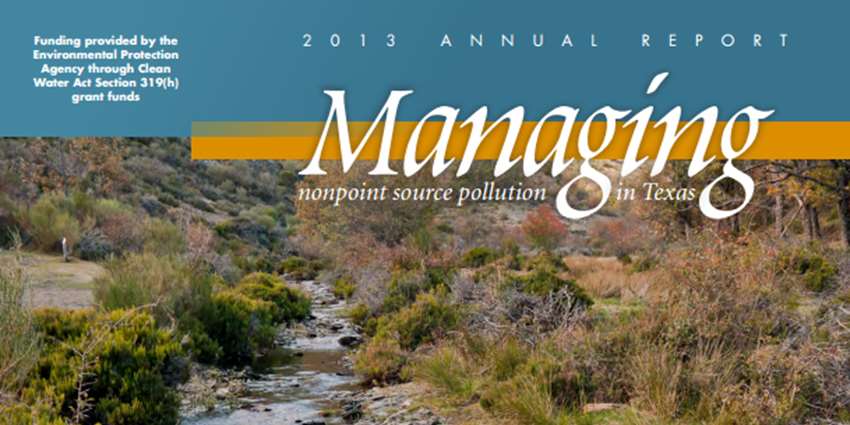The Texas State Soil and Water Conservation Board (TSSWCB) and the Texas Commission on Environmental Quality recently released the 2013 Annual Report on Managing Nonpoint Source Water Pollution. Highlights in the report include annual load reductions of nitrogen, phosphorus and sediment and success stories from water bodies across the state.
The federal Clean Water Act requires states to develop a program to protect the quality of water resources from the adverse effects of nonpoint source water pollution. The Texas Nonpoint Source Management Program, updated in 2012, is the state’s comprehensive strategy for addressing nonpoint source water pollution, according to TSSWCB.
Each year, Congress appropriates federal funds to states through the U.S. Environmental Protection Agency under the Clean Water Act 319(h) Nonpoint Source Grant Program, and Texas uses these funds to administer and implement the Texas Nonpoint Source Management Program.
Many local, regional, state and federal agencies play an integral part in managing nonpoint source pollution, especially at the watershed level, according to TSSWCB.
The report emphasizes the state’s efforts during fiscal year 2013 to collect data, assess water quality, implement projects that reduce or prevent nonpoint source pollution, and educate and involve the public to improve and maintain the quality of Texas water resources.
Multiple projects and programs that are managed or assisted by the Texas Water Resources Institute are featured in the report, including the Texas Watershed Planning Training Program, Lone Star Healthy Streams, Arroyo Colorado Watershed Conservancy, Texas Well Owner Network and Carters Creek Watershed TMDL Implementation Plan.
The report is available for download, and hard copies are available from TSSWCB upon request.

